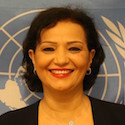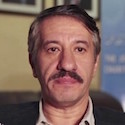Exploring country-level coordination mechanisms: Follow-up questions
On 22 June, PHAP and ICVA hosted the second session of the Learning stream on humanitarian coordination, which focused on the main humanitarian coordination mechanisms available at the country level. The event featured presentations from Mohammad Kilani (Jordan Hashemite Charity Organization), Paul Knox Clarke (ALNAP), Kirk Prichard (Concern U.S. and Building a Better Response), and Najat Rochdi, Humanitarian Coordinator in CAR.
While many of the questions from participants were answered during the event (listen to these in the event recording), there were more questions than there was time for, the guest experts have answered follow-up questions in writing, which you can now read on this page.
“Paul, during the event you said that coordination is working well when it comes to identifying underserved areas and securing assistance for them. What, then, do you think of the risk-averse organizations, for instance, with regards to serving those most in need in Iraq (outside the Kurdistan area)? or about the lack of assistance outside of the official refugee camps in Northern Kivu?”
- UN consultant, Switzerland
 Paul Knox Clarke
Paul Knox ClarkeA good point. What I should have said is that coordination is working well compared to not having a coordination system at all. The fact that it is better than it was does not mean that the problem is entirely solved. The existing coordination system seems to work, where the main reason for gaps in coverage is the lack of knowledge about who is working where (particularly in rapid onset), and having a “tunnel vision,” just working where you have always worked (particularly in situations where a protracted emergency “blows up”). Under these circumstances, clarifying that gaps exist – to agencies and donors – can make funding available and can also lead agencies to expand their programs. The situation is different where everybody knows that there are gaps, but feels the risk of filling those gaps is too high. A voluntary coordination system has very few tools to address this.
"Why do you think that traditional country-level coordination mechanisms have lesser success in some countries such as Myanmar? What are the reasons behind these differences and how do current structures try to overcome this?"
- Senior Policy Specialist, INGO, Qatar
 Paul Knox Clarke
Paul Knox ClarkeI am afraid that I am not familiar with the specific situation in Myanmar. By traditional mechanism, do you mean the traditional national mechanism or the traditional IASC mechanism (Clusters, HCT, etc.)? As a general comment, I think it is fair to say that the IASC mechanism was not really developed to address problems of articulating with national mechanisms, whether government-led or civil society-led. It was more an answer to problems between international actors. And so the question – “how does all this relate to what is already there?” is often an afterthought. This is a priority to address, and I expect will be a central feature of the next generation of the coordination architecture. The aim will be to create a context-specific architecture, that is as light as possible, and which builds on what already exists. In order for this to happen, HCT members will need skills in assessing what already exists, and in developing alternative models. Incentives (such as the funds that are released on cluster activation) will need to be changed. And wherever possible, governments will clarify coordination mechanisms in advance, outlining who does what and how the international system “fits in.”
"Needs assessments are not always evidence-based, perhaps because access is difficult. How do coordination mechanisms at the country level try to overcome that?"
- Program Manager, Sweden
 Paul Knox Clarke
Paul Knox ClarkeBroadly, coordination mechanisms can try to design and implement joint assessments (one single assessment shared between the various agencies); coordinated assessments (everyone does their own, but with some shared questions and methods); third-party assessments (getting a neutral specialized agency to do the assessment); or joint analyses (trying to build up a big picture on the basis of very different assessments). We look at this issue in some depth in a report on the clusters that you can find here (please refer to pages 28 ff, 82 ff). One area for improvement would be to move away from one off assessments to a “rolling” continuous monitoring function.
"Would you recommend a multiple-sector NGO to join all clusters covering their areas of operation, or should smaller NGOs focus on having a stronger presence in one or few clusters?"
- Project Officer, NGO, Malaysia

Najat Rochdi
Most of the NGOs in CAR have both humanitarian and development mandates, and it is very difficult to differentiate the fine line between the two. Giving NGOs such a broader mandate is advantageous in areas where there are few partners, and allows in practice to reinforce the nexus between humanitarian and development action.
On the other hand, having double humanitarian and development mandates can be challenging for NGOs as (a) their response capacity can be over-stretched, hence affecting the quality of work, and (b) their work and budget prioritization difficult with competing immediate and medium- and longer-term needs.
The decision for NGOs to undertake multiple sector interventions should be on a case on case basis and also looking at the geographical aspect.
“Are there similar clusters or other country-level coordination mechanisms for development projects? If so, how do they link with humanitarian structures following the current move towards a greater nexus between humanitarian and development work?”
- Project Officer, NGO, Malaysia

Najat Rochdi
There is a country level mechanism for development actors in CAR at the ministerial level. Humanitarian clusters and the government sectoral meetings hold joint meetings that are co-chaired between the ministry concerned and the cluster coordinator. The clusters that have gone further in this regard include WASH, Education, Health, and Food Security.
At the strategic level and with the introduction of the National Peace and Recovery Plan (RCPCA), there is a “Committée Directive Conjointe”. This is a strategic level meeting where recovery and development issues are discussed as well as looking at ways to strengthen the peace-development-humanitarian nexus. As the Humanitarian Coordinator, I represent the humanitarian interests in this forum.
In addition, there are ad hoc meetings between the development and the humanitarian actors. The Humanitarian Country Team (HCT) regularly invites development actors to discuss the nexus and works on reinforcing the New Way of Working.
“The Humanitarian Country Teams are open for humanitarian actors... How and should humanitarian coordination also be open for development actors in protracted crisis, in the spirit of the nexus between humanitarian and development and the New Way of Working (NWoW)?”
- Program Manager, Sweden

Najat Rochdi
While it is not the role of the humanitarian community to carry out development activities, there is a need for close coordination. Progress has been made, despite challenges, and humanitarian and development actors are jointly programming. This is also particularly fostered by the appointment of a triple hatted DSRSG-HC-RC that brings together peacekeeping, humanitarian and development perspectives.
For example, there is joint programming between WFP to provide food to FAO seeds and tools beneficiaries. This has helped to protect seeds. In the Western part of the country, several NGOs are undertaking joint programming in the area where 275,000 CAR refugees are supposed to be returning, should the security situation allow it. In this area, there are both humanitarian and development needs, and the security situation is calm now allowing both to happen.
It is important to also note that during the elaboration of the Humanitarian Response Plan 2017 for CAR, there was extensive consultations between the humanitarians and development actors. That is why the HRP is tailored in a manner to deal with only life-saving intervention, while the National Peace and Recovery Plan (RCPCA) covers the recovery and development action. There was articulation between the two and there continues to be close consultations.
“We often observe Humanitarian Country Teams (HCTs) being driven by the leadership, without full membership engagement. How can we improve that? Should HCTs be monitored or facilitated by an external observer?”
- Advocacy Manager, INGO, Jordan

Paul Knox Clarke
They shouldn’t be monitored, I don’t think so. Perhaps, they should be facilitated, with their agreement. The Peer to Peer Support team (formerly, STAIT) appears to have had success facilitating conversations within HCTs around humanitarian performance, and this is something that could be built upon. But there may be some quite simple steps to real improvement in many cases (at least, in cases where I have talked to HCT members). We should be clear about the sort of things that the HCT exists to do, focusing more on addressing emerging response-wide issues, and focusing less on creating documents for the Humanitarian Programme Cycle (HPC). We should be clear about how things get onto the agenda of HCT meetings. Key issues are often buried in AoB – Any Other Business. We should be clear about how decisions are made, and have a standing agenda item to follow up on action taken as a result of previous decisions.
“As a national NGO, taking into account that we are hopefully moving toward a system of humanitarian action that is led more and more by government and civil society actors in crisis-affected countries, do you think the current coordination structures are fit for purpose? If not, what changes do you think are necessary?”
- Humanitarian Researcher, INGO, United States

Mohammad Kilani
Despite the fact that governments and NGOs in addition to civil society actors can do much to effectively face humanitarian crises – as we all know – each crisis is different, and it has its own character. A health epidemic response is totally different than an earthquake, a refugee crisis or famine. In addition, each country has in place its own mechanisms to be activated when a crisis erupts. So depending on the level of the crisis and the national capabilities of the country, the national humanitarian response can be effectively implemented or not. Some countries can experience and effectively face big crises without the need to request international aid; while others request international aid to foreign governments and NGOs.
From our own experience, coordination structures in a crisis evolve along with the crisis, becoming more efficient if it can provide assistance in a timely manner. Having said that, the most important thing is that the humanitarian response starts from the beginning of a crisis (within 48 hours from the onset). Therefore, we should focus on investing in the capacity building of countries in order to put in place coordination structures that will enable national governments and local NGOs to respond in the most efficient way, with the help of the UN and the international community; for example, by establishing a national crisis center that has a data bank in regard to the local resources and capabilities that could be allocated to a crisis, in addition to gathering contacts of whom they can recruit for a quick response.
To my knowledge, there are many initiatives to create a structured coordination chain, starting at local level, moving to national level, and they expanding to regional level reaching to international coordination mechanisms.
“How does the civil-military coordination cell deals with humanitarian collaboration at operational level with peace missions in terms of principles, as these missions can be seen as non-neutral and partial?”
- Human Rights Officer, UN system, Mali

Najat Rochdi
CM-Coord is key to ensure dialogue between a peacekeeping mission and the humanitarian community, and it is anchored in the concept of cooperation and co-existence. The interaction between the mission and the humanitarians needs to be based on mutual trust. Concrete action in the CM-Coord context takes into account how the mission is perceived on the ground by the civilian population but also the armed groups with whom we often negotiate humanitarian access with.
Where the mission has a robust mandate in the protection of civilians and fighting armed groups, the CM-Coord mechanism is important for the planning of operations (as much as possible) to prepare for possible collateral damage. Caution must however be applied as the perception of humanitarians being too close to the mission could jeopardize negotiations on humanitarian access. Humanitarian action must be anchored on the international humanitarian law to enable actors to respond to the needs wherever they are.
You can access the rest of the Q&A as well as further resources on the event page.